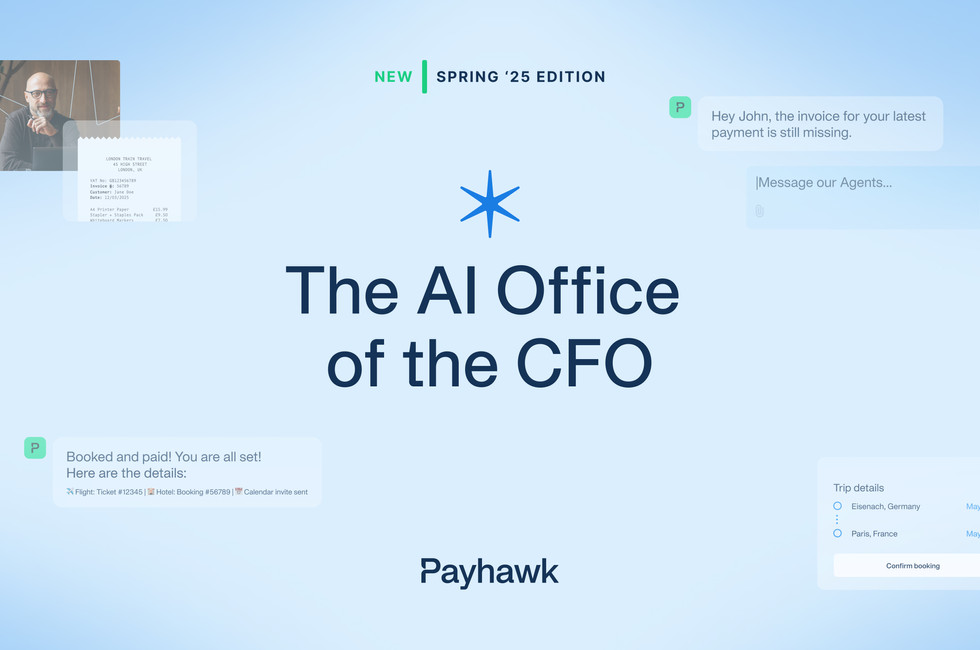
The growth of a fintech engineering team



I’m normally behind the scenes, but as the year gets going, I wanted to reflect on some of the changes that our team has been through since we launched Payhawk in 2018.
Group CFO? Get the complete guide to multi-entity spend control (feat' top CFO insights)
Group CFO? Get the complete guide to multi-entity spend control (feat' top CFO insights)



I’m normally behind the scenes, but as the year gets going, I wanted to reflect on some of the changes that our team has been through since we launched Payhawk in 2018.
By submitting this form, you agree to receive emails about our products and services per our Privacy Policy.
In July 2018, Hristo and I started as the only two employees and engineers at Payhawk. We met working at Telerik, where I was an engineer and Hristo was a product manager (PM). Hristo invited me to join his new internal startup project within the company, Darvin.ai, a chatbot platform. And, after this project, we decided both wanted to venture out and start our own company.
At the start, I focused on having a robust infrastructure, scalability, and reliability, which is not typical for a startup. But for us, the ability to deploy, monitor, and debug at speed was essential to enable rapid development. Then, I chose NodeJS with TypeScript as a simple environment on which to create the building blocks of Payhawk.In September 2018, we hired two more engineers, fellow Telerik alumni Rosi and Viktor. Together the four of us managed to launch the product after five more months and issued our first card in February 2019.You might wonder how three engineers and a PM could launch a product in only eight months? Well, the four of us had very different and complementary tech skills, and all of us had a lot of experience with UX. Between us, we had built several products in our previous jobs, working very closely with UX specialists, so we had the fundamental knowledge of what the user would expect from our product.
Take your career to new heights
A couple of months later, we hired the next two engineers, Galin and Vasko. At this point, none of the engineers had a specific role. We hired full-stack developers because we needed to build everything from scratch. Everyone owned whatever they wanted and felt they could deliver. We had no meetings, no official decision process, and no roadmap, it was chaotic sometimes, but it worked. Hristo looked closely at each part of the product and set requests and iterations on the go. We would then test them; if they worked, then great, we moved on; if it didn't, we would iterate it until it worked.This process was the fastest way to push things. But we knew it was unsustainable. There were bottlenecks. One engineer owned a full feature, and if that developer was sick one day, it was mayhem. It was real life in a startup, fast and fun. But soon, we had a big challenge coming our way.
As a payments and expense software company, we handle company funds for our customers. So, of course, even though we're not a traditional bank, we, like all fintechs, need to follow local regulations and adopt risk mitigation measures and monitor financial processes. This compliance factor added a layer of complication to the engineering team.In mid-2019, we decided to become PCI DSS compliant. A must-have in the world of card payments, with requirements both operational and technical. It's basically a set of rules by credit card companies to protect credit card numbers in the payments industry.Achieving the compliance standard was challenging but essential, and it took some time. It took six months alone to gather all the information. I then had to write a 100-page document containing all the processes and requirements while trying not to put too much pressure on my team. We managed to get PCI DSS, but it's not exactly designed to accommodate small teams like ours was back then.Back in the present day, we recently hired a Director of Information and Security to focus on this endeavour solely. The person in this role will pay attention to Payhawk's engineering team's structure and processes and help us comply with other norms like ISO 27001 on data security.Why is data security so important? Simple, as a customer-centric organization, we know it's essential for our customers, so it's essential for us.
Today, we have 17 engineers and three PMs organized in five areas: Payments, integrations, product features (2), and intelligence. But we’re still growing. Our team has monthly product meetings with the whole org’ so everyone understands product feature development. Plus, we also have a comprehensive roadmap, or as we call it, a value map.One of the main lessons we learned at Telerik was that engineers should always code, no matter their role. Individual contribution to the product at Payhawk is mandatory. I want people to be product champions and feel invested in the outcomes of what we develop. By working in this way, we’re all in it together, and we can also maintain a good technical understanding of how things work.Another differentiator within our tech team is always wearing a Customer Success hat. Hristo says everyone has two jobs, one their primary function and one in customer success. We work closely with customers to solve problems and listen to product requests, and this personal attention will always remain key.
In the future, we'll have independent teams within the five engineering and development areas. These teams will deliver by themselves, allowing engineers and PMs to deploy new features and customer requests quickly. Of course, we'll focus on maintaining a high standard of security, reliability, and availability too.We'll be working on our communication processes among the divisions as we grow. And though our communication channels might be less formalised when it comes to process, we'll still be having a lot of fun creatively solving problems for our customers. If you're interested in joining our engineering team, please check out the latest opportunities and get in touch.
An extract of this article first appeared on LinkedIn.

The Payhawk Editorial Team consists seasoned finance professionals boasting years of experience in spend management, digital transformation, and the finance profession. We're dedicated to delivering insightful content to empower your financial journey.
By submitting this form, you agree to receive emails about our products and services per our Privacy Policy.